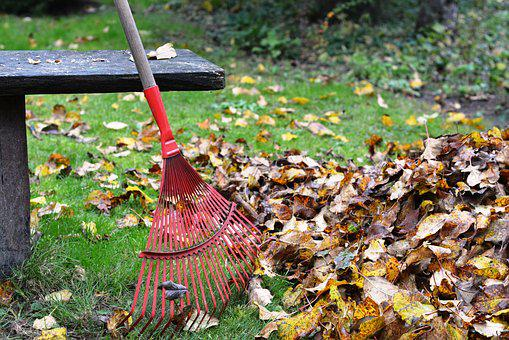Mulching Leaves for Compost
How to Mulch Leaves
Fall Leaves: Food for Your Yard
By Kathleen Barco
UCCE Master Gardeners of El Dorado County
Article originally appeared in the Mountain Democrat, 10/19/ 2022
Leaves are magical things. The original solar panels, leaves take sunlight and convert it into food for the plant. But when they dry up and fall on the ground, many people quickly want to rake them out of their yards. Many fallen leaves end up in burn piles or tossed into the green waste bin. Why is so much plant nutrition being tossed away when it could benefit our gardens? All the nutrients present in leaves are intended to enrich the soil where they fall by ultimately becoming mulch.
A mulch is any material placed on the soil to cover and protect it. It can help control weeds and retain moisture. Tree leaves make excellent mulch, but it is important to know which type of leaves to use and for what purpose. Mulched leaves are a great addition to a compost heap but be sure it is from a tree that does not inhibit other plant growth, such as oak or black walnut. You can look up details about mulches on the University of California Integrated Pest Management site at: http://ucipm.ucdavis.edu/PMG/GARDEN/ENVIRON/mulches.html.
There are several ways to create mulch from the leaves that fall in your yard. The simplest way to chop up leaves is to use equipment designed with a mulching feature. Many lawn mowers are also mulchers. Many woodchippers can also shred leaves into small pieces that quickly break down into mulch. But for those of us who do not own specialized equipment, there are some other, often more fun, ways to use leaves to benefit your garden.
You can dump leaves into a large garbage can, protect yourself with eye protection and gloves, insert your weed whacker and shred the leaves. This method can be clumsy, and carry some risk, but it works. Rather than using a weed whacker, you can also use hedge pruners or other long-bladed loppers to shred leaves. The benefit of reducing the leaves to small pieces is that they are already contained in the can where they can break down into mulch much more quickly. To this same end, a large pile of leaves can be reduced in size by running any kind of a lawn mower through it several times.
There is also the school of thought that advocates leaving fallen leaves where they lay. If you can tolerate the untidiness, consider leaving them in place. They will naturally inhibit weed growth and hold moisture against the soil. If you are concerned with the appearance, or you must abide by homeowner association rules, this method is least preferred.

Mulching and composting leaves are a great way to use what nature has given you. If you want to learn more about mulching or creating a compost pile, check out the California Garden Web, created by the University of California Department of Agriculture and Natural Resources. https://cagardenweb.ucanr.edu/
Master Gardener classes are offered monthly throughout the county. You can find our class schedule at: http://mgeldorado.ucanr.edu/Public_Education_Classes/?calendar=yes&g=56698, and recorded classes on many gardening topics here: http://mgeldorado.ucanr.edu/Public_Education/Classes/.
Have a gardening question? Master Gardeners are working hard to answer your questions. Use the “Ask a Master Gardener” option on our website: mgeldorado.ucanr.edu. or leave a message on our office telephone: 530-621-5512. We’ll get back to you!
Master Gardeners are also on Facebook, Instagram, and Pinterest. To sign up for notices and newsletters, see http://ucanr.edu/master gardener e-news.
